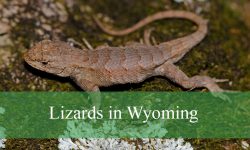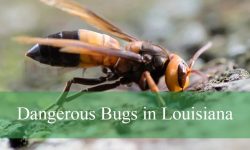Crows and jays in New Jersey are some of the most intelligent and vocal birds found throughout the state. They are easily recognized by their loud calls, bold behavior, and distinctive plumage. These birds play an important role in local ecosystems and are commonly seen in a wide range of habitats.
New Jersey is home to a variety of crows and jays, from the familiar American Crow and Blue Jay to less common species like the Fish Crow and Common Raven. A few rare visitors, such as the Canada Jay and Steller’s Jay, occasionally make appearances, attracting attention from birdwatchers.
This guide introduces 7 types of crows and jays in New Jersey, with pictures and helpful facts to aid in identification. From coastal areas to mountain forests, these birds add color and sound to the landscape all year round.
Common Crows and Jays Found in New Jersey
American Crow (Corvus brachyrhynchos)

The American Crow is one of the most recognizable and widespread birds in New Jersey. It has entirely black plumage, including glossy feathers, a sturdy black bill, black legs, and dark eyes. This medium-to-large bird has a strong, steady flight and often travels in groups, especially during the fall and winter months. Its adaptability and intelligence make it successful in both wild and human-altered environments.
Its call is a loud, repeated “caw-caw,” often echoing across neighborhoods, farms, and forests. These calls are used to communicate with others in their group and may indicate alarm or coordination. Crows are known to recognize human faces, solve problems, and even use tools in some cases, showcasing their advanced cognitive abilities.
American Crows are opportunistic feeders, consuming a wide range of foods including insects, small animals, fruits, seeds, carrion, and human garbage. They’re frequently seen foraging in open fields, roadways, and parking lots. During winter, they form large communal roosts, sometimes numbering in the thousands, offering safety in numbers.
In New Jersey, American Crows are present year-round and found statewide. They thrive in rural farmlands, urban parks, suburban backyards, and pine forests. From the Pine Barrens to the Delaware Water Gap, these birds remain a constant and vocal part of the local birdlife.
Fish Crow (Corvus ossifragus)
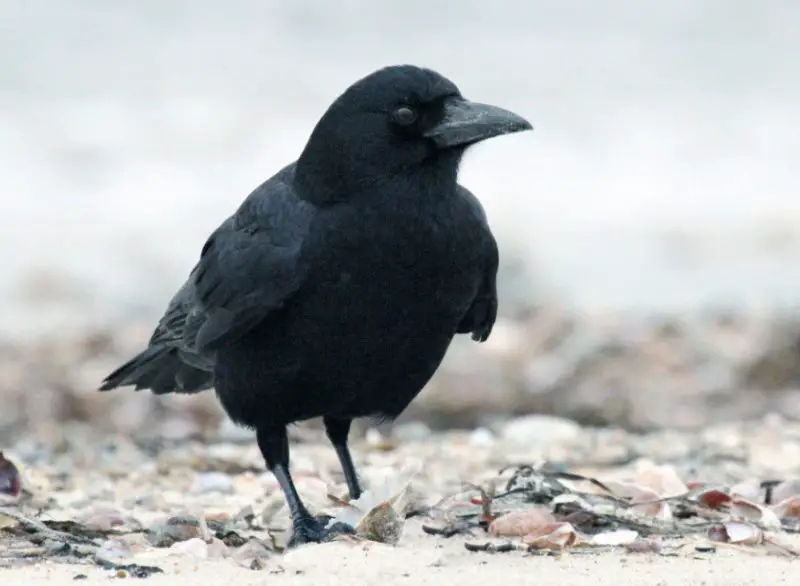
The Fish Crow closely resembles the American Crow but can be identified by its smaller size, more slender build, and its distinct nasal call—often described as a soft “uh-uh.” This vocalization is the most reliable way to tell the two species apart, especially when they coexist in the same areas. Like their relatives, Fish Crows also display glossy black feathers and sharp intelligence.
They have a diet that leans more toward aquatic sources. Fish Crows feed on fish, crabs, carrion, bird eggs, and various scraps found in coastal or riverine environments. Their foraging behavior is similar to that of gulls, and they’re known to raid other birds’ nests in search of eggs or young.
Fish Crows are often seen along the eastern and southern coasts of New Jersey, especially near estuaries, salt marshes, boat docks, and coastal towns like Atlantic City and Cape May. They are highly adapted to human-dominated environments and can be seen perching on lampposts, scavenging in parking lots, or flying along highways.
These birds are most common in warmer months but are increasingly present year-round in southern parts of the state. Their range has been expanding northward, and they now appear regularly in inland towns and along major river systems like the Delaware.
Blue Jay (Cyanocitta cristata)

The Blue Jay is one of New Jersey’s most colorful and noisy residents. With bright blue plumage, a white chest, black facial markings, and a prominent crest on its head, it’s hard to miss. Their strong, varied vocalizations include the classic “jay-jay” call as well as imitations of hawks, which they use to scare off other birds from food sources.
These intelligent birds are omnivorous, feeding on insects, seeds, fruits, and especially acorns, which they often store for later use. They’re frequent visitors to backyard feeders where they aggressively guard their food, and they often dominate smaller birds in mixed flocks. Blue Jays also play an important ecological role by dispersing acorns, which helps regenerate oak forests.
Their social behavior is complex. Blue Jays may form family groups and loose flocks, and they work together to mob predators such as hawks and owls. During migration, they often travel in flocks, though not all individuals migrate—many remain in New Jersey through the winter.
Blue Jays are common across New Jersey’s forests, suburbs, and city parks. They thrive in mixed woodlands, especially areas with oak trees, and can be seen in residential neighborhoods from the Highlands in the north to the Pinelands in the south.
Common Raven (Corvus corax) (Uncommon but expanding)
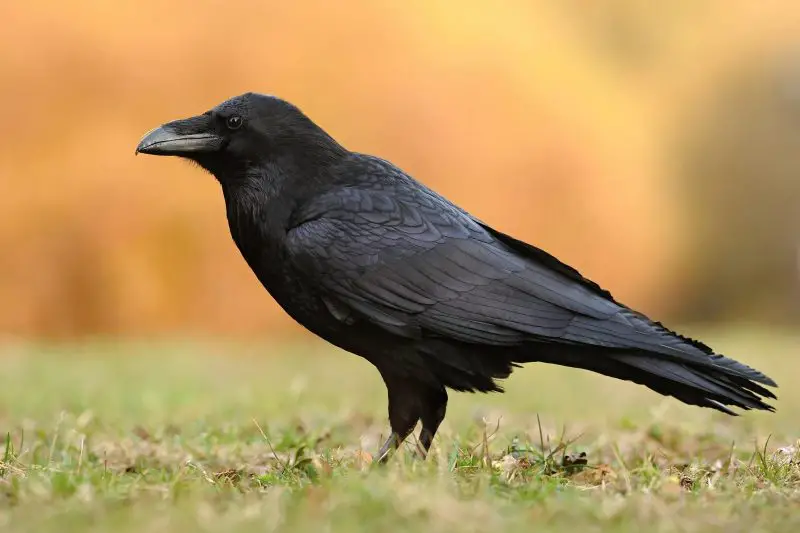
The Common Raven is the largest member of the crow family and is distinguished by its massive size, wedge-shaped tail, shaggy throat feathers, and deep, croaking “kraaawk” call. Unlike crows, their voice is lower and more guttural. Ravens also display acrobatic flight behaviors, including barrel rolls and somersaults.
Once extirpated from New Jersey, Common Ravens have made a gradual return, particularly in the northwestern parts of the state. Their range has expanded along the Appalachian Mountains, and sightings have become more frequent in Sussex, Warren, and Morris Counties. They often inhabit more remote or rugged terrain compared to crows.
These birds prefer wild areas with cliffs, dense forests, and high perches. They build large nests on cliffs, in tall trees, or even on human structures such as cell towers. Their diet includes carrion, small animals, insects, grains, and garbage—showcasing their scavenger nature.
While still relatively uncommon in much of New Jersey, the Common Raven’s presence is steadily increasing. Birders often spot them flying alone or in pairs along highways, ridgelines, or near protected natural areas like High Point State Park and the Delaware Water Gap.
Canada Jay (Perisoreus canadensis)
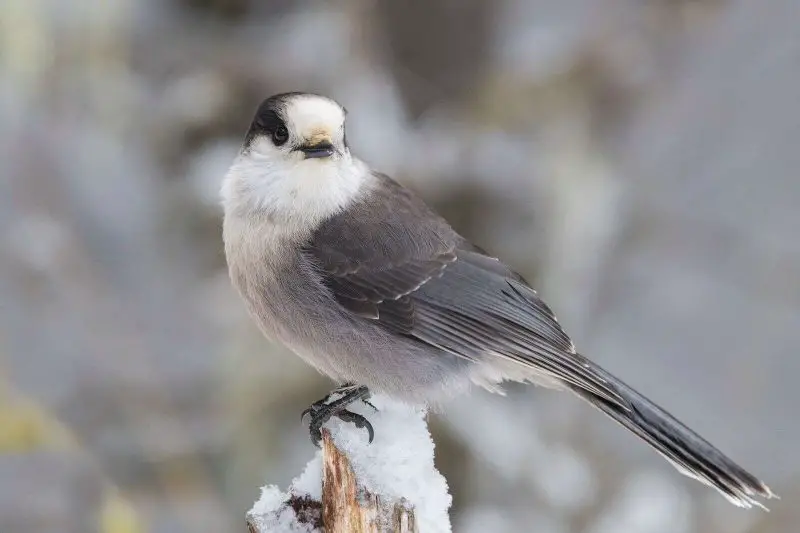
The Canada Jay, also known as the Gray Jay, is an extremely rare visitor in New Jersey. This species is native to the boreal forests of Canada and the mountainous regions of the northeastern United States. Occasionally, individual birds may wander south during irruption years, and a few have been recorded in the northernmost areas of New Jersey, particularly in elevated, forested habitats.
It has a soft, rounded appearance with fluffy plumage that is pale gray overall, contrasted by a lighter white face and throat. Unlike the more familiar Blue Jay, the Canada Jay lacks a crest and displays more subtle coloring. Its calm behavior and quiet vocalizations make it easy to overlook, especially in dense coniferous woods.
Canada Jays are well-adapted to cold environments and are known for their habit of storing food. They will hide berries, insects, and scraps of meat in bark crevices or lichen-covered branches for later consumption during harsh winters. They are friendly and often approach humans in remote campsites or wilderness areas.
While not established in New Jersey, birders occasionally report sightings near forested highlands in Sussex or Warren Counties. These are extremely rare events and are of particular interest to the local birding community when they occur.
Steller’s Jay (Cyanocitta stelleri)

Steller’s Jay is primarily a western species, commonly found in the Rocky Mountains, Pacific Northwest, and along the Sierra Nevada. However, very rarely, an individual may wander far beyond its typical range and appear in the eastern United States. In New Jersey, sightings are exceptionally rare and typically involve lone vagrant birds during the fall migration season.
This jay is striking in appearance, featuring deep blue body feathers and a black crest and head. The tall, spiky crest and the sharp contrast between its head and body color help distinguish it from other jay species. Its loud, harsh calls also differ from the Blue Jay’s more varied vocalizations.
Like other jays, Steller’s Jays are intelligent and bold. They feed on a variety of food sources including nuts, seeds, insects, and small animals. In their home range, they often visit campsites and feeders, showing little fear of people. Their presence in New Jersey, however, is usually brief and fleeting.
Because of how rare they are in the East, a confirmed sighting of a Steller’s Jay in New Jersey draws significant attention from birdwatchers. Most reports come from areas with mixed or coniferous forest cover, particularly in the northwestern part of the state during autumn.
Clark’s Nutcracker (Nucifraga columbiana)
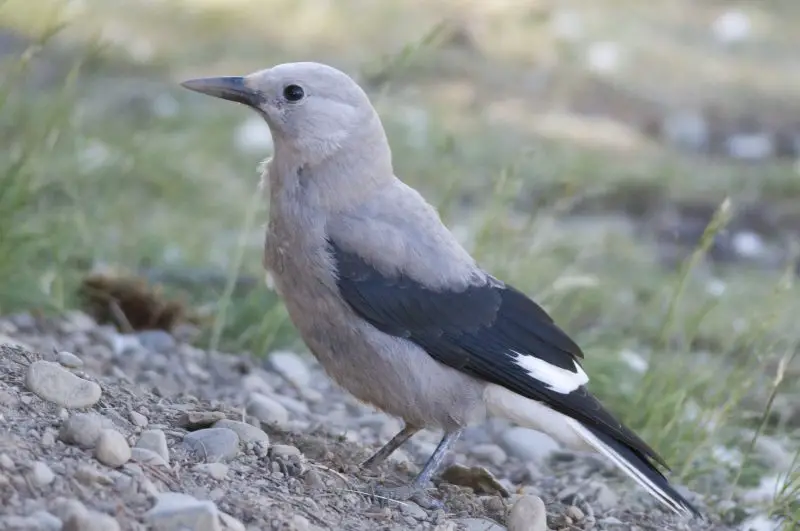
Clark’s Nutcracker is a high-elevation bird of the western United States, especially the Rocky Mountains and Sierra Nevada. It is a member of the crow family and has an important ecological role in spreading pine seeds, particularly from whitebark pine. While this species is not part of New Jersey’s usual avifauna, a few rare vagrants have been observed in the eastern U.S., including extremely limited reports in New Jersey.
The bird has a sturdy body covered in light gray plumage with bold black wings and tail, and distinctive white edges on the tail. It has a long, pointed bill adapted for prying seeds from pine cones. Its flight is strong and direct, often covering great distances across mountainous landscapes.
Clark’s Nutcrackers are known for their remarkable memory, allowing them to cache thousands of seeds and retrieve them months later. They are often seen in high-altitude forests and rocky slopes in the West but do not naturally occur in the East. Sightings outside of their range typically involve individuals displaced by extreme weather or food shortages.
In New Jersey, there are no well-documented sightings accepted as regular occurrences, but birders keep a lookout for such out-of-range visitors. Any appearance would likely occur during fall or winter and attract immediate interest from the birdwatching community.
FAQ About Crows and Jays in New Jersey
What is the most common crow species in New Jersey?
The American Crow is the most common crow species in New Jersey. It can be found year-round across the entire state, from urban areas and farms to forests and coastlines. Its loud “caw” call and all-black appearance make it easy to identify.
How can I tell the difference between an American Crow and a Fish Crow?
The key difference is their call. Fish Crows have a distinct nasal “uh-uh” sound, while American Crows produce a classic “caw-caw” call. Fish Crows are also slightly smaller and more slender, and they are more common along coastal and river areas in southern and eastern New Jersey.
Are Common Ravens found in New Jersey?
Yes, but they are still uncommon. Common Ravens are slowly expanding their range into northwestern New Jersey, especially in Sussex and Warren Counties. They are larger than crows and have a deep, croaking call and a wedge-shaped tail in flight.
Where can I see Blue Jays in New Jersey?
Blue Jays are common across the entire state. You can see them in mixed woodlands, suburbs, backyards, and parks. They are year-round residents and are easily spotted thanks to their bright blue plumage and loud calls.
Are there any rare jays or crows that appear in New Jersey?
Yes. Rare vagrants like the Canada Jay, Steller’s Jay, and Clark’s Nutcracker have occasionally been spotted in New Jersey, though such sightings are extremely rare. These species are more typical of northern or western habitats but may appear during migration or irruption years.
Do any crows or jays migrate through New Jersey?
Blue Jays may migrate in small flocks during fall, although many remain resident year-round. American and Fish Crows are mostly non-migratory in New Jersey but may form large winter roosts. Some vagrant species, like Steller’s Jay, may show up during fall migration as wanderers.
What habitats are best for viewing crows and jays in New Jersey?
You can find American Crows and Blue Jays in almost any habitat including cities, suburbs, farms, and forests. Fish Crows prefer wetlands, river valleys, and coastal areas, while Common Ravens are most often seen in remote woodlands and mountainous regions in the northwest.
Do crows and jays visit bird feeders?
Yes. Blue Jays are frequent visitors to bird feeders, especially those with peanuts, sunflower seeds, or suet. Crows rarely visit small feeders but may show interest in open compost bins or food scraps. Providing large, open feeding areas may occasionally attract them.

